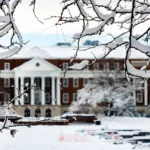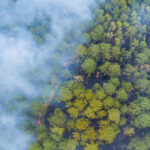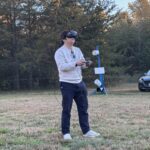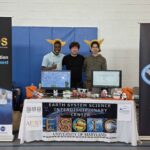by Guangyang Fang
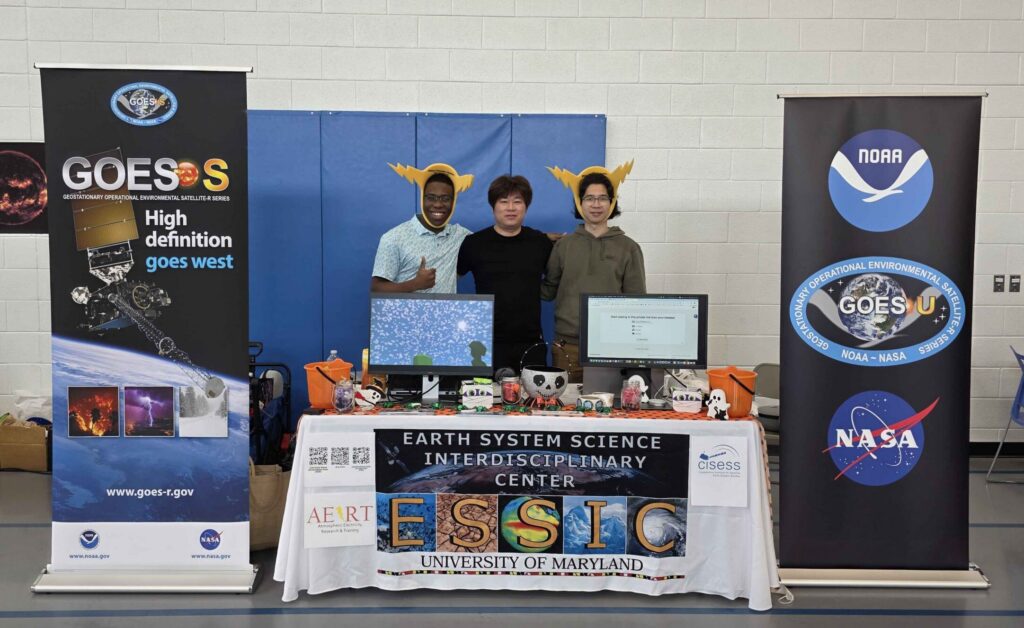
On October 18, 2025, ESSIC/CISESS scientist Guangyang Fang and CISESS interns Anh Pham and Samuel Wiggins were invited to host a STEM outreach booth on behalf of the UMD/ESSIC/CISESS at the 10th Annual Spooky Mad Science Expo, held at the Patrick Henry Recreation Center in Alexandria, Virginia.
The booth, titled “Virtual/Mixed Reality (VR/MR) in Earth Science Education”, invited families and students to experience the Virtual Proving Ground and Training Center (VPGTC)—a digital learning environment designed to engage students in immersive geoscience education. Wearing Meta Quest headsets, participants explored 3D learning modules developed by the CISESS Lightning and VR Research Group, including Faraday Cage Lightning Safety, Water Cycle and Precipitation Formation, and Cloud and Lightning Classification.
Attendees of all ages had the opportunity to “step inside” Earth System phenomena, witnessing how lightning forms and how clouds and precipitation evolve within a virtual atmosphere. The hands-on experience highlighted the use of immersive technology to make complex atmospheric science concepts more tangible and engaging.
Many parents and educators expressed enthusiasm for the VR program, noting its potential for classroom use and student engagement. Some families requested information on how their children could participate in future ESSIC/CISESS VR projects. Fang and his students also collected valuable feedback to improve the visual interactivity and educational clarity of the modules.
This makes the third year that the CISESS Lightning and VR research group has participated in the Spooky Mad Science Expo. This event, organized by Chrysalis Development Group, celebrated its 10th anniversary as a signature Northern Virginia outreach program that promotes hands-on STEM learning for elementary through high school students. The expo annually brings together scientists, engineers, and educators who share a passion for inspiring the next generation of innovators through creative science demonstrations and interactive exhibits.
“Seeing students light up while exploring the lightning safety and weather simulations shows how powerful immersive technology can be in science education,” said Fang. “Events like this connect research with real community impact.”

